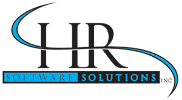One of the reasons HR departments need to consider big data for their systems is the increasing way that it defines the millennial lifestyle. In an article for Forbes, Meghan Biro mentions the omnipresence of integrated technology as an aspect of the current workforce that should continue to change HR. Because younger workers are familiar with integrated data, bringing this approach to HR may appeal to this population and set the stage for future growth.
By adapting to the realities of modern HR needs, companies can make informed changes to their workforce and extrapolate information from individual datasets to create greater analyses. Important data can be taken from various sources, including information on new hires, and examined in the context of relevant trends. Technology based on “machine learning” will also play a role in this, as Peter Cappelli writes in an article for Human Resource Executive Online.
Cappelli argues that machine learning is useful for HR, since it operates outside of the assumptions that often guide traditional HR data analysis.
“The power of machine learning comes from the fact that it might well find important predictors that we never thought of before because prior theory didn’t include them—e.g., the distance an applicant’s home is from the work location predicts turnover—and wasn’t particularly adept at ‘mining’ through lots of seemingly unrelated data to find predictors,” he writes.
Biro’s article, in contrast, puts this in a generational context, describing the need among newer workers with technology and their expectations. Harnessing the full use of the cloud could influence work simplicity if analytics is used to reduce legacy system clutter.
Embarking on the HR system selection process is the first step of reinventing current processes for optimal data usage, and consultants will steer selection with their insight.
